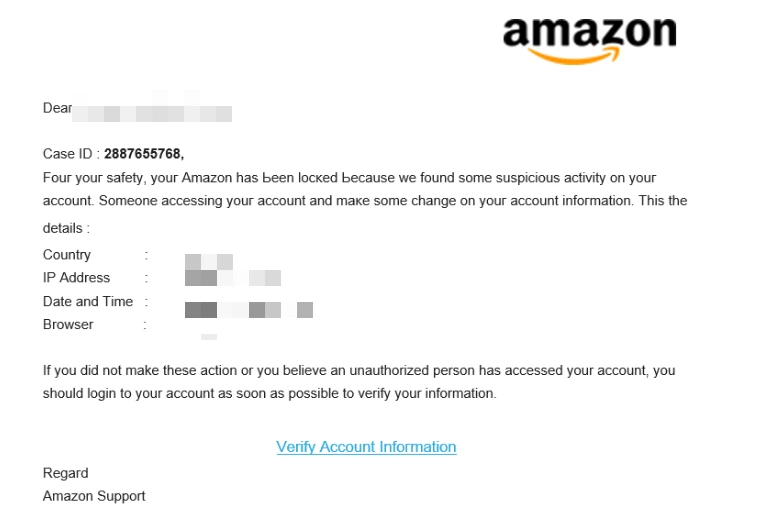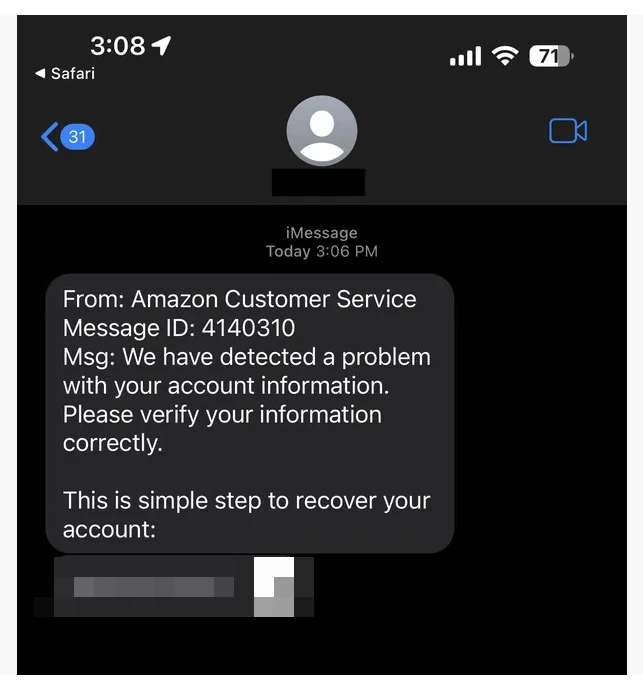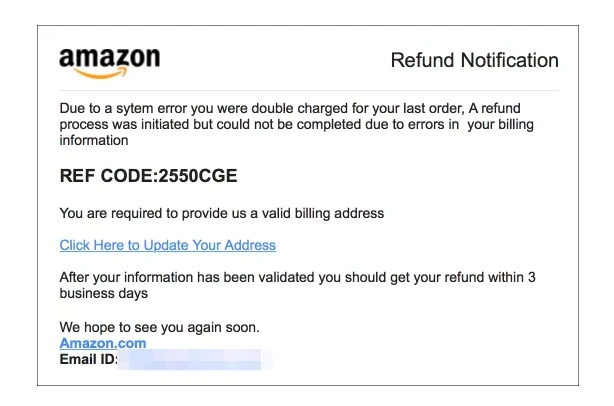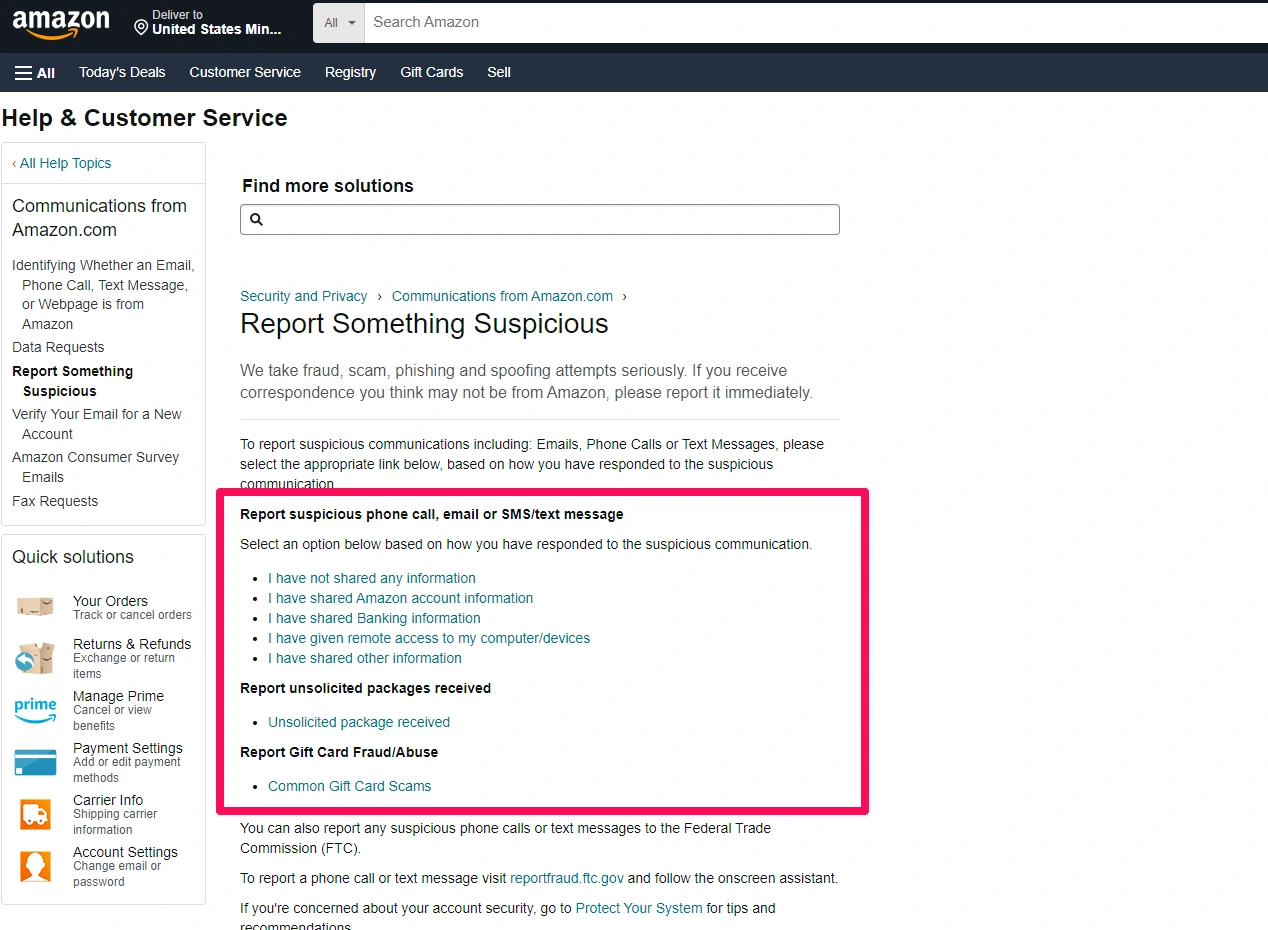In an age where online shopping has become part of the everyday, Amazon scams cast a shadow on an otherwise seamless experience. As the biggest e-commerce platform on the Internet, Amazon has millions of customers and sellers, making it a prime target for scammers who are looking to take advantage of unsuspecting individuals.
In this guide, we will discuss the most common types of Amazon scams, how to identify them, and what steps you can take to protect yourself.
Can you get scammed on Amazon?
First things first — is it really possible to get scammed on Amazon? After all, Amazon is huge tech company with seemingly impenetrable security measures in place. Well, unfortunately, the answer is a resounding “yes,” and worse, these scams are much more prevalent than most people realize.
Consider one report by the Federal Trade Commission which states that 1 in 3 scam victims reported losing money to a scammer impersonating Amazon. This translates to losses of more than $27 million from July 2020 through June 2021 alone.
To be clear, we say this not to discourage you from using the platform for your online shopping needs. However, the above statistics do highlight the need to be vigilant and informed when it comes to avoiding Amazon scams. You can start by learning about the most common types of scams below.
Common Amazon Scams
Like with any online threat, the best way to protect yourself from Amazon scams is by learning as much as you can about how these scams work.
In this section, we’ve compiled some of the most common tactics used by scammers targeting Amazon shoppers. The more you know about these tactics, the easier it will be for you to spot and avoid them.
Amazon email scams
Phishing emails claiming that your Amazon account is locked or frozen are a widespread form of Amazon email scams. Scammers exploit your fears by sending messages informing you that your account is in jeopardy. However, any instructions to “verify” your account by following a link or providing personal information serve only to hand over your sensitive data to the fraudsters.
As far as strategies go, it’s a straightforward but sadly effective approach. Fraudsters disseminate phishing emails or text messages, alerting unsuspecting individuals that their Amazon accounts have been suspended or frozen due to unusual activity. These messages usually contain malicious links or urge victims to call a specific phone number provided by the scammers.
Whether a victim decides to call or click, they unknowingly open the door to potential fraud. Clicking on a link might initiate an immediate malware download or reroute the user to a fake website designed specifically to pilfer Amazon login credentials or banking information.
Here is an example of what such an email scam looks like:
Remember, Amazon will never ask for account verification or personal details via unsolicited text messages or emails. If you receive such a message, its best to disregard it entirely. Avoid responding directly or clicking any included links or calling provided phone numbers. Instead, use the official Amazon app or website to verify your account status.
Amazon brushing scams
Another unsettling tactic, known as a brushing scam, is perplexing for those who encounter it. This scam involves Amazon sellers who are desperate to climb the ranks and improve their product visibility through inflated review counts.
Authentic customer reviews can be hard to come by, particularly for low-quality products. As a result, unscrupulous sellers resort to unethical tactics to inflate their product ratings. They obtain personal information and send unsolicited items, creating false orders and shipments under the recipient’s name.
The real kicker? Unknowingly, the recipient of these “ghost” purchases becomes the author of a glowing endorsement they never wrote. This fraudulent activity boosts product credibility, elevating seller rankings while the victim remains unaware. Additionally, Amazon may penalize the affected account, flagging it for participating in deceitful practices, potentially leading to suspension.
Amazon text scams
Similar to email phishing, text message scams, also known as “smishing,” have become another common way for scammers to target Amazon users. These messages might claim to report an unauthorized login or some other issue with your Amazon account.
Here is an example of what these text scams might look like:
Whatever the context, these text scams aim to create a sense of urgency or offer enticing bait to trick individuals into giving up their personal information or login credentials. It’s critical to avoid interacting with these messages. Amazon will never ask you to provide sensitive information via text message.
Amazon gift card scams
This type of scam involves convincing individuals to purchase Amazon gift cards under false pretenses, only for the scammer to coax the victim into revealing the card numbers. These details allow the scammer to redeem the value of the purchased cards immediately, leaving the actual cardholder with nothing.
Scammers craft inventive scenarios to manipulate potential victims into using these gift cards as a form of payment. For example, a scammer might direct you to pay for a product using gift cards; you can bet that there will be an issue with their PayPal account.
These scams often involve high-pressure tactics to spur quick decisions, preying on the target’s desire for a good deal. However, keep in mind that Amazon gift cards are not meant to be used as payment for purchases from individuals or third-party sellers. It’s best to stick with secure and authorized methods of payment, such as credit cards or PayPal.
Amazon phone scams
In some cases, scammers might take the direct approach and call their targets pretending to be Amazon employees. These phone scams can take various forms, from offering fake prizes or discounts to claiming there’s an issue with your account or a recent purchase.
Regardless of the scenario, the goal is always to obtain sensitive information. Again, Amazon will never resort to making unsolicited calls, to ask for personal information or remote access to your device. If you receive such a call, hang up and log on to your Amazon account to confirm your account status.
Amazon refund scams
Now while Amazon refund scams are technically just a variation of an email, phone or text scam, we felt that it deserves its category due to the frequency and success that scammers have with this tactic.
These scams typically involve a communication claiming that you are eligible for an Amazon refund, often in a large amount, and requesting personal information or payment details to process the refund. However, once again, these requests are merely tricks used by scammers to steal your sensitive data.
If you receive such a message, always double-check the legitimacy of the refund request by logging into your Amazon account or contacting customer service directly. Remember, if it seems too good to be true, it probably is. Trust your instincts and proceed with caution when it comes to providing personal information or payment details online.
Below is a classic example of an Amazon refund scam spread via email:
As you can see above, scammers often use official-looking logos and email templates to create a false sense of legitimacy. However, it’s vital to remember that Amazon will never ask for personal information or payment details via email for any reason. Always be cautious and double-check the source before responding to such requests.
Amazon unauthorized purchase scam
Similar to the refund scam, the unauthorized purchase scam also involves scammers tricking individuals into providing personal information or payment details under false pretenses. In this case, the scammer claims that a purchase was made from your Amazon account without your knowledge or authorization.
Typically, these scams come in the form of an email claiming that an order has been placed using your account and requesting confirmation of the purchase by clicking on a link or providing personal information. However, these links and requests are fraudulent and designed to steal your sensitive data.
Below is a good example of what this scam looks like:
In this case, the victim might let their emotions take over and call the number provided out of panic or concern. However, this is what the scammer wants – to create a sense of urgency and manipulate the victim into giving up their personal information.
Always remember that legitimate communication from Amazon will always be available in your Amazon account under “Your Orders.” If you receive an email or call regarding an unauthorized purchase, log into your account directly and check your order history to verify its authenticity.
How to avoid scams on Amazon
Now that we have covered the most common types of scams on Amazon, it’s essential to know how to protect yourself from falling victim. Below are some tips to help you avoid scams when using Amazon:
- Never provide personal information or payment details in response to unsolicited emails, texts, or calls.
- Always double-check the source of a communication claiming to be from Amazon by logging into your account directly.
- Be cautious of high-pressure tactics or offers that seem too good to be true.
- Stick with secure and authorized methods of payment, such as credit cards or PayPal, when making purchases on Amazon.
- Regularly review your order history and account activity for any discrepancies or unauthorized purchases.
A good rule of thumb is to never trust information that you come across outside of the official Amazon platform. Whether it’s an email, text message, or phone call claiming to be from Amazon, always verify its legitimacy before taking any action. Report any suspicious activity or communication to Amazon’s customer service immediately.
How to report a scam on Amazon?
Fortunately, Amazon has made it easy to report scams and suspicious activity on their platform. If you believe that you have been targeted by a scam or have fallen victim to one, you can refer to Amazon’s Help & Customer Service Page.
Choose the option that best fits your situation and follow the steps provided to report the incident. Remember to provide as much detail as possible, including any communication or transaction information related to the scam.
FAQ
Will Amazon refund me if I get scammed?
While Amazon offers a buyer protection program, it does not cover scams or unauthorized purchases made outside of the Amazon platform. It’s essential to stay vigilant and report any suspicious activity immediately to protect yourself from potential financial loss.
How do I know if an Amazon seller is legit?
To determine if an Amazon seller is legitimate, start by checking their seller feedback ratings and reviews from previous customers. Look for a high number of positive feedback remarks over a reasonable timeframe, which is a good indication of their reliability.
Additionally, review their product listings for accuracy and authenticity, and ensure that they have a record of fulfilling orders on time. Be wary of sellers with multiple negative reviews or a new account with no history.
